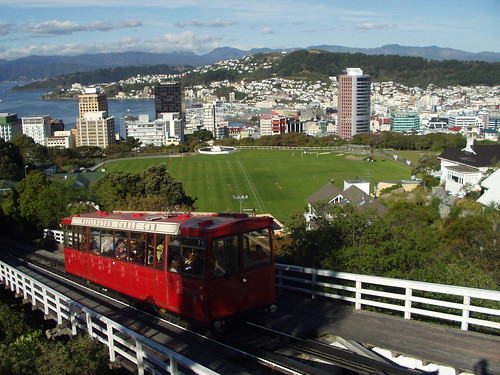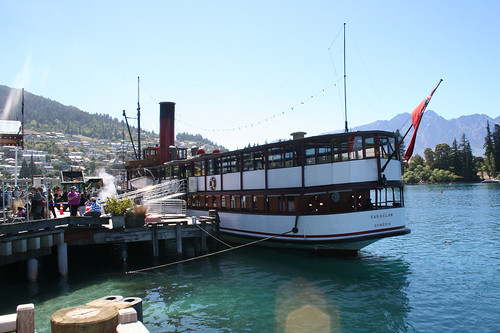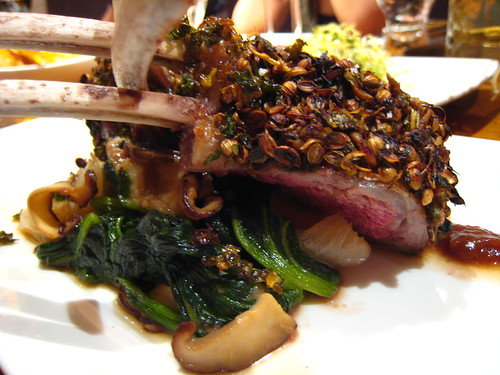
Behind an exuberant nature and full of contrasts, with glaciers, volcanoes and beaches a few kilometers apart, we discover a modern and environmentally conscious. New Zealand is one of those countries in which one can imagine a life: clean, safe, multicultural, free from poverty and ostentatious millionaire, home to vibrant cities, gardens, generous, well-served tables, kindness without artifice.
The landscapes of Rudyard Kipling, once called them the eighth wonder of the world. But it would be over 100 years for those scenarios that not for nothing were chosen to film the blockbuster trilogy The Lord of the Rings, among other fantasy films, emerging as the main export of New Zealand. A country that, by all where you look, is far from everywhere.
It happens that in his tight and rugged geography, the two large islands, which combined with a handful of other islets make up the state of New Zealand, concentrated from glaciers to volcanoes and black sand beaches, rainforest and even his own chain of Alps. And being a compact territory, with impeccable routes and ease of transport, in one day is possible, for example, jump from a ski slope into a surfboard.
But not enough to have a privileged nature and should therefore be seized. Something that New Zealanders can do, and very well.
In fact, almost one third of New Zealand, whose size is comparable to Britain or Japan, falls under the mantle of forest park, marine reserve or any other protected area. There are 14 national parks in total, all with free access, and anywhere in the country there is always one nearby.
There are plenty options to enjoy every corner of the islands. And to make it from all angles, means and funding imaginable scenic trains that zigzag between peaks and rugged peaks, helicopters flying over steaming lakes, ragged coastal ships sailing through fjords, rubber boats floating in underground caverns, gliders that hover over fields dotted with sheep (say there are 15 per capita), special whale-watching catamaran … And for the players of the trekking and cycling, all of New Zealand is a massive circuit of trails and thousands of miles marked, marked and re-dial.
Sightseeing in New Zealand:
Beyond the cosmopolitan Auckland, the largest city and it goes 80% of international visitors, is also the nation’s capital, Wellington, as famous for its many festivals and intense cultural activity (has more than 50 museums and galleries, among them the renowned Te Papa Tongarewa), and by the fierceness of its winds, as it shares with Chicago the Windy City nickname.

Or Christchurch, the largest city in South Island, also known as the most English outside of England. It is a delight to walk in Botanical Gardens, visit the Avon River by canoe, lost in its Gothic-style churches or a drink in bars in The Strip, along the River.
Also in the South Island, Queenstown is another stop pin. Proclaimed the capital of adventure tourism, has well earned its fame from skiing to rafting and skydiving, there is no activity that is practiced around the alpine village. They even say that this is where the New Zealand A. J. Hackett invented bungee jumping (Hackett is the same as in 1986 was launched from a rubber band tied to the Eiffel Tower). From Queenstown start excursions to the fjords of Milford Sound and Doubtful Sound, nature preserves an unearthly beauty.
However, the competitive advantage of New Zealand scenery is beyond shocking. Its green image and its emphasis on sustainable tourism are the main bet of a government concerned about its natural treasures care and minimize the impact on both the environment and the community.
Useful facts:
– The North Island is the most populous of the two, and its subtropical climate is warm, while the South Island is colder and mountainous. There are daily ferry services to cross from one to another. From top to bottom, are 1600 km.

– 15% of the population were Maori and 6.5 comes from the Pacific Islands.
– The New Zealand’s national sport is rugby, but the country also has the highest number of boats per capita.
– The currency is the New Zealand dollar. A DNZ equivalent to $ 0.80.
Meals:
Although more than 60 varieties of seafood, the national dish is the lamb, served grilled or in stews. Its wines have gained a reputation in recent years. In New Zealand it is not customary to tip.
Nature at its best:
With only 3400 inhabitants, Kaikoura receives 1.6 million visitors per year (whale watching is the star of the place). To minimize the impact that this means in its infrastructure and environment, adopted a series of measures that at first were guilty of ambitious, but who achieved amazing results. Among them, Kaikoura now recycles 65% of the trash (even has a fashion show in which clothes are made from these wastes), and proposed total waste reduction by 2015. We also planted two million trees to offset carbon dioxide emissions, including the tourist in his initiative: sell trees to visitors, who after planting can continue its growth through the Internet.
Asian and Polynesian influences are evident just by walking through the downtown Albert or Queen. Where you can see entire blocks with Chinese restaurants, Thai, Japanese, particularly in ideogram. The sushi even sold in trays in the street for a few dollars. The European root is maintained, for example, in restaurants as A Little Italy and The West, whose huge mussels enjoy great fame.

Good Luck!
Leave a Reply
You must be logged in to post a comment.
Recent Comments